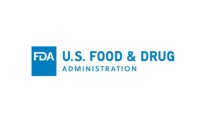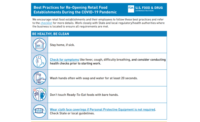Labeling of Allergens: Regulations and Best Practices that Protect the Consumer

As many as 15 million people in the United States suffer from food allergies.[1] Every year, approximately 30,000 of them go to the emergency room due to a severe allergic reaction to food, according to the U.S. Food and Drug Administration (FDA).[2] What’s more, food allergies are on the rise: A report from the U.S. Centers for Disease Control and Prevention found that the prevalence of food allergies among children increased by approximately 50 percent from 1997–2011.[3]
With no known cure for food allergies, the only recourse for consumers who suffer from them is to avoid ingredients that trigger reactions. To that end, their primary line of defense is the proper labeling of allergens on a product. However, despite food manufacturers’ best efforts, “undeclared allergens,” that is, allergens mistakenly omitted from the label, are the leading cause of food recalls requested by FDA.[4] Undeclared allergens may result from cross-contamination, placing the wrong label on a product or a manufacturer not being aware of the need to label a certain ingredient.
A number of regulations address food allergies and aim to mitigate risk to consumers. For food manufacturers, fully understanding these regulations and implementing a set of best practices to ensure adherence will not only protect the consumer, but will serve to reduce business risk as well.
Know the Regulations
In 2004, the Food Allergen Labeling and Consumer Protection Act (FALCPA) created industry standards mandating that the labels on food products prominently display the presence of any ingredient from one of the eight major food allergens—peanuts, eggs, milk and milk by-products, wheat, tree nuts, soy, fish and shellfish. These allergens account for 90 percent of all documented food allergies in the United States.
The most recent regulations to address food allergens were established by the Food Safety Modernization Act (FSMA). Signed into law in 2011, this legislation represents the most sweeping change to food safety regulation since the 1930s. FSMA represents a more proactive approach to food safety by preventing incidents of contamination before they occur. The final rules of the FSMA are set to be published by FDA this month. At that point, the clock starts for business of all sizes to reach compliance. Large businesses will have one year from the posting date to comply, medium-sized businesses will have 2 years, and small businesses will have 3 years.
Allergen control is an important aspect of FSMA. The law is expected to result in updated Good Manufacturing Practices that will likely impact sanitary equipment design requirements as equipment manufacturers shift their focus to include allergens as well as microbial pathogens. Identifying and implementing preventive control rules is another area in which FSMA will address allergens.
Some of the earliest and most significant impacts on food producers are expected to come from preventive control rules. Operators will need to understand any allergen hazards likely to occur in their operation and have measures in place to minimize or eliminate them. Ultimately, every facility in the food supply chain will be required to implement a written food safety plan that includes food allergen controls.
Prevent Mislabeling and Cross-Contamination
The bottom line is, professionals responsible for any food manufacturing operation must ensure the label lists any allergen found in a product. This means preventing the mislabeling of a product as well as avoiding cross-contact with allergens from other products. To prevent mislabeling, food producers can use vision inspection systems to confirm that a label is matched accurately with its respective product. Addressing the second concern, cross-contamination, involves preventing any contact between products that contain allergens and those that do not—especially for products used as ingredients in the production of other foods.
Cross-contamination is often difficult to address and involves supplier attention and control—an important and relatively new concept to allergen labeling. Whether manufacturers source ingredients domestically or internationally, it is crucial that they’re on the same page with their suppliers. Manufacturers need to know all other products found or produced in a supplier’s facility and whether those products contain allergens. If, for instance, a supplier of corn flour also makes wheat flour in the same facility, it is incumbent on the manufacturer to verify that the supplier is taking the necessary precautions to prevent cross contact between the two ingredients. For imported ingredients, FSMA places responsibility and liability on the business importing the food to ensure its safety. The Foreign Supplier Verification Program, mandated by FSMA, will require the importer to maintain a list of all foreign suppliers and to develop a Hazard Analysis for all imported food products.
Stay Ahead of the Curve
One of the best ways for food processors and packagers to prepare for upcoming regulations is to educate themselves on existing food safety rules that FSMA is likely to incorporate. For instance, Hazard Analysis and Critical Control Points (HACCP) is a systematic preventive approach to production processes that designs measurements to reduce risk in a facility. HACCP has many parallels to the upcoming preventive controls rules found in the FSMA. Manufacturers can ease the transition into the new laws by formulating and adopting programs now.
Jeff Barach, Ph.D., is a FSMA consultant to PMMI, The Association of Packaging and Processing Technologies. Additionally, from September 28–30, 2015, food companies throughout the supply chain can learn about the latest technologies and insights to ensure compliance with current and future packaging regulations at PACK EXPO Las Vegas.
References
1. www.foodallergy.org/facts-and-stats?
2. www.fda.gov/forconsumers/consumerupdates/ucm089307.htm.
3. www.cdc.gov/nchs/data/databriefs/db121.pdf.
4. www.fda.gov/forconsumers/consumerupdates/ucm416577.htm.
Looking for a reprint of this article?
From high-res PDFs to custom plaques, order your copy today!





